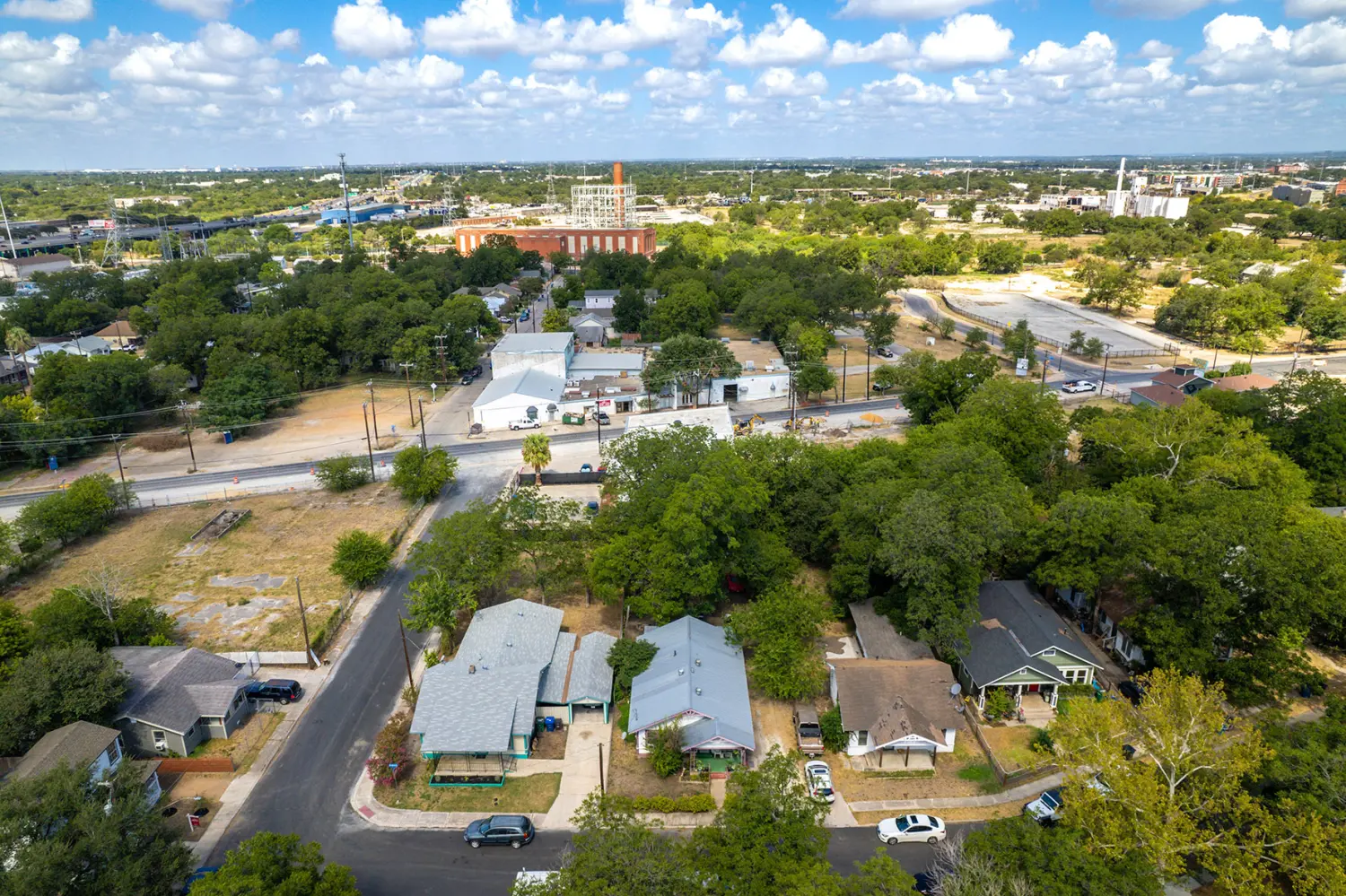In 1969, New Communities Inc., a collective in rural Lee County, Georgia, devised a new way to help Black farmers overcome the forces that excluded them from owning land, such as industrial farming, racial discrimination, and predatory lending: It established the first community land trust. The organization bought property on behalf of community members and sold homes at discounted rates, all while keeping title to the land in trust. Over the years, the CLT model has been adapted to make urban homes more affordable—amidst growing gentrification in the 1980s and during the housing boom of the 1990s.
Now, community land trusts present a powerful tool for Black homeowners to realize the true value of their assets by shifting the balance of power in home purchases.
At their core, CLTs are based on an alternative conception of property rights and ownership and represent a structural shift that precludes the use of housing—considered to be a basic human right—as a vehicle for speculation to build wealth for privileged groups. They’re now being used to provide an affordable option for homeownership in places like Houston, where historically marginalized communities are being priced out.
Price pressures pushing legacy residents out
The Houston suburbs of the Greater Third Ward and The Greater Fifth Ward are both Black communities with a rich cultural legacy. In January 2024, median housing prices in the two wards were $410,000 and $346,000, respectively, an increase of 28% and 17.4% from January 2020. Price increases like these are typical of the city. Despite Houston’s reputation for affordability, its Black residents are among the hardest pressed by gentrification and at a high risk of displacement. In 2021, median sales prices in Houston neared $350,000, increasing by 10% on the previous year. But not all this increase in value flowed to community members; house price appreciation was more likely to push residents out.
Houston is a good example of how, under our housing market’s current structure, price pressures can disproportionately displace Black residents. Since 2011 the “affordability gap,” measuring the difference between the median home price and what the median homebuyer can afford, has increased by $100,000. Black households have been unduly impacted by house price appreciation. Between 2010 and 2020, Black residents in Harris County saw homeownership drop by 5 percentage points, the highest decline among all racial and ethnic categories. Across the city, foreclosures are also higher for majority-minority neighborhoods.
However, some community groups are taking a new approach, supporting residents’ efforts to become beneficiaries, not victims, of Houston’s rapid development. Community land trusts, like the Houston Community Land Trust, are one such innovation, enabling residents to remain in gentrifying communities by providing a more affordable avenue to homeownership.
Through community land trusts, residents can help build a housing market that works for them
Community land trusts are non-profit, community organizations that purchase homes to expand and preserve low- and moderate- cost housing. They work by offering homebuyers subsidized housing, in the case of HCLT, reducing the sale price by up to $150,000 for a median home purchase price of $75,115. However, unlike traditional approaches to subsidized housing, the use of a ground-lease, where the buyer purchases the home, but rents the land on which it sits for a nominal amount from the trust, ensures that the subsidy is “locked-in” indefinitely. The ground-lease means the benefits of home appreciation are shared between the owner of the home and the community organization that owns the land. By using the equity gains to subsidize the price of the house, HCLT can guarantee that the home remains affordable to the next buyer, even as it appreciates in value. Moreover, in some states and cities, CLT homeowners are entitled to property tax exemptions in recognition of the fact that these taxes can be burdensome for low-income owner occupiers.
CLTs like Houston’s are helping to diversify the housing market, restructuring it to value factors like community cohesion and long-term affordability, elements which are not considered in traditional housing markets. By providing low-income families an opportunity for homeownership in their neighborhoods, CLTs can give locals the chance to remain and continue shaping their neighborhoods even in areas that are gentrifying. This is a real alternative to structures that have historically resulted in devaluation and divestment from Black-majority neighborhoods.
This shift away from valuing housing for profit-generation and towards community stability has benefits beyond maintaining an affordable housing stock. Rather than treating housing as a financial investment, CLTs work to reposition housing as a collective good, which contributes to the prosperity of a neighborhood. There are trade-offs compared with a traditional housing market—the CLT model, for example, limits the total equity that an owner-occupier can accrue and the land itself always remains in trust, rather than transferring to the occupier. Nevertheless, CLTs provide an avenue for giving local community members, who are otherwise priced out of property ownership, a stake in neighborhood development, which is more often the domain of private developers from outside of the community.
CLTs emphasize self-determination, embedding community building and collective decision making into the structures of the trusts themselves. For example, HCLT is designed to facilitate community participation in neighborhood development beyond the renovations that a typical homeowner would make. While the board is composed of private and public stakeholders, there is also strong representation by community members. No single interest predominates; community members have a voice alongside partners from other community-based organizations, faith-based communities, realtors, financial literacy organizations, housing advocates, and other potential homeowners. These broad partnerships provide additional benefits to CLT members, as most organizations also provide other civic functions, that include helping members understand and navigate opaque city codes and financial processes, such as refinancing, loan applications, and tax information.
Gary Community Ventures, is another community-based organization that is challenging the ways that the housing market is structured. Based in Denver, Colorado, the organization operates the Dearfield Fund for Black Wealth, which aims to accelerate homeownership among Black families in the Denver metro area through a down-payment assistance product which shares some similarities to a CLT, but with fewer restrictions on ownership. By providing up to $40,000 in down-payment support to Black homebuyers and limiting the homebuyer’s equity to a modest 5% at resale, the fund maintains the wealth generated through appreciation in the home’s value. The fund also limits the home’s sale price when it is sold to a new buyer, keeping prices affordable. The shared equity model prioritizes neighborhood accessibility and stability by delivering more modest gains in the wealth of individual homeowners. This structural change helps ensure that the home will remain permanently affordable and thus keeps housing in the area accessible to low income residents.
Can CLTs and other new forms of ownership help drive community-led growth without displacement?
In 2022, the Houston metro area had the second highest increase in population among U.S. metropolitan areas. At this rate, the population will swell to around 8 million over the next five years. In a traditional housing market, population pressures like this would continue to push up prices. However, organizations like the ones above offer an alternative that challenges these relationships and their effects on residents. In places like Houston, CLTs and shared-equity organizations are demonstrating that a diverse mix of residents can benefit from the development process when there are creative, and more affordable, alternatives to traditional homeownership.



